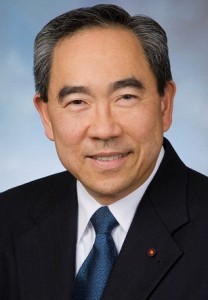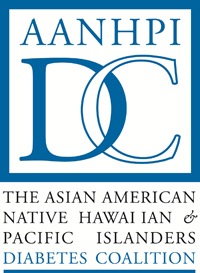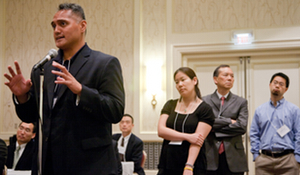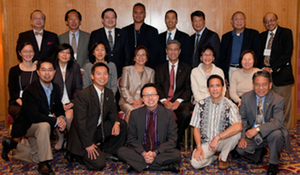
Diabetes: A Global Crisis, A Challenge for AANHPI
Kenneth P. Moritsugu is an American physician and public health administrator. A Rear Admiral of the US Public Health Service, Dr. Moritsugu retired in 2007 as acting United States Surgeon General. He is a member of the National Council of Asian Pacific Islander Physicians (NCAPIP) Board of Directors. Originally presented at Campaign for Modern Medicines 05/01/14

The fastest growing population in America is that of Asian Americans, where the "model minority" myth includes the misperception that because Asians are skinnier, they are also healthier.
To that point, body mass index (BMI) has become the popular indicator of a person's risk for developing diabetes, hypertension, and other serious, obesity-related disorders. The Centers for Medicare and Medicaid Services (CMS) concurs with this line of thinking: if you have a BMI of 30 or more, you qualify for "free" obesity counseling from your primary health provider. Unfortunately, an Asian American who "looks healthy", but could still be at significant risk with a BMI of only 24, wouldn't qualify for coverage.
Native Hawaiians and Pacific Islanders, in particular, suffer some of the greatest diabetes disparities in the world. Samoans both in the USA and United States Associated Pacific Islands (USAPI), overweight and obesity rates can reach close to 90%, and rates of diabetes can reach 47%. Among the greatest needs for these populations are more definitive diabetes prevention and management guidelines, and community oriented outreach.
Too often, we focus on "The What"- the science/evidence/data - without giving enough attention to "The How" - how that science will be translated into benefits for the individual. Too often we paint with the same broad brush; translating national and regional data into efforts that don't help - and, as in the BMI case, are even detrimental - the individual.
It's clear that, especially for AANHPI (and all minority groups), a more nuanced approach is necessary. Besides supporting ongoing research targeting AANHPI populations, what can we do as physicians and advocates right now? It begins with arming ourselves with knowledge, and talking.
The National Council of Asian Pacific Islander Physicians (NCAPIP) believes that, as part of a new calling for physicians, an integral role that they must play is that of a communicator. It sounds like common sense, but a great many physicians remain siloed in their offices, hospitals, and academic institutions without effectively communicating the best science available to those we serve. We have failed if all we've done to communicate amounts to them hearing us but not understanding, embracing, and acting on that information. And a population as diverse AANHPI warrants extra attention in this realm precisely because of diversity in language, culture, and health status.
This May, let's talk about diabetes in AANHPI, and just how "The What" that we have can help populations, communities, and most of all, individuals achieve better health.
AANHPI Diabetes Coalition


The intention was to take the findings and recommendations from the Hawaii Symposium to a national level. On May 18th in Arlington, Virginia, NCAPIP and AANHPI Diabetes Coalition partners reconvened along with federal leaders in public health. New data on diabetes and associated diseases and conditions were shared, and a plan of action was formed. The action plan was based on three items: Clinical management guidelines, definitive population data to guide future management, and community tailored interventions. Each of these three items has, in turn, three underlying strategic actions, leading to the plan being called the "3x3 Diabetes Action Steps".
Mission Statement
The mission of the Asian American, Native Hawaiian, and Pacific Islander Diabetes Coalition (AANHPI-DC) is to advance the study and treatment of diabetes in AANHPI populations and communities, in order to effectively prevent and treat this serious disease. The Diabetes Coalition will:
- Bring together the stakeholders, including physicians and other health care providers, health educators, researchers, community-based organizations, patient and consumer organizations, health departments, and the pharmaceutical industry
- Increase awareness about the diabetes disparity in AANHPI populations and communities
- Support research on appropriate clinical and community interventions to effectively prevent and treat diabetes in AANHPI populations and communities
- Advocate for more resources from government and the private sector to focus on diabetes in AANHPI populations and communities.
State of the Sciences: Diabetes in Asian Americans, Native Hawaiians & Pacific Islanders - Full Compendium
AANHPI Diabetes Coalition Member Resources:
- Pathophysiologic Differences Among Asians, Native Hawaiians, and Other Pacific Islanders and Treatment Implications
- Understanding and Addressing Unique Needs of Diabetes in Asian Americans, Native Hawaiians, and Pacific Islanders
- Type 2 Diabetes: An Epidemic Requiring Global Attention and Urgent Action
- Elevated Rates of Diabetes in Pacific Islanders and Asian Subgroups
